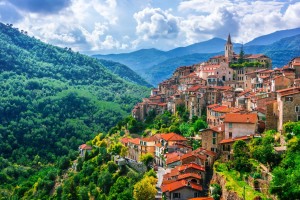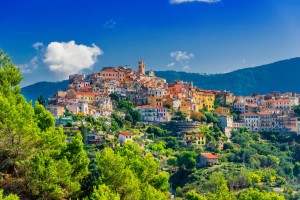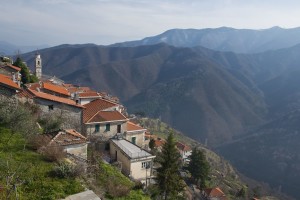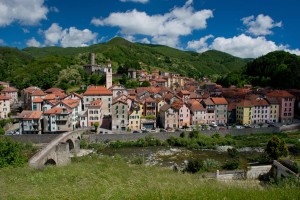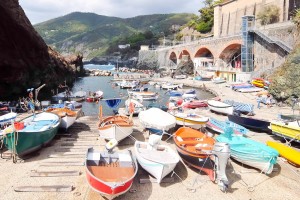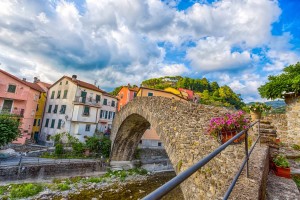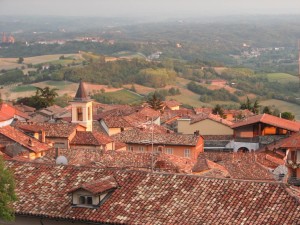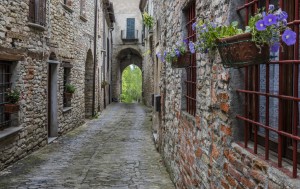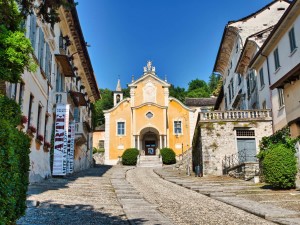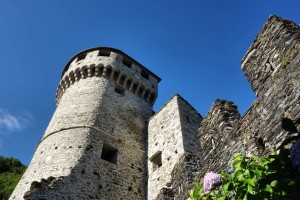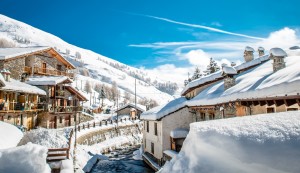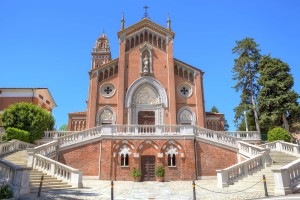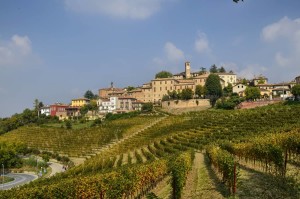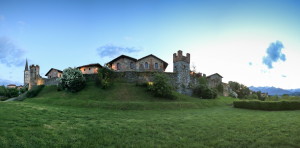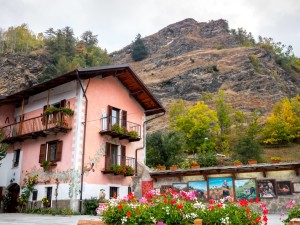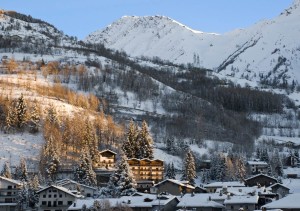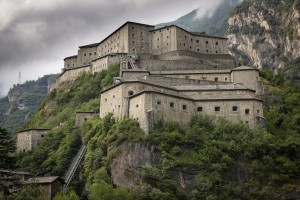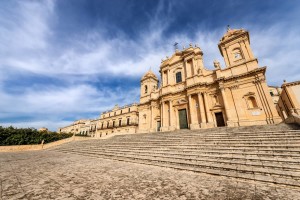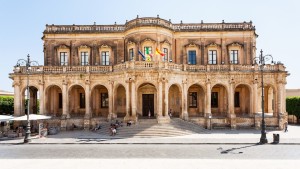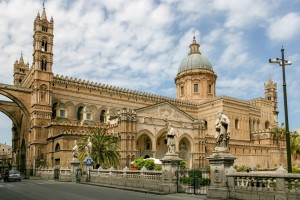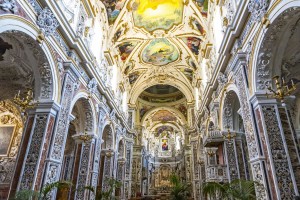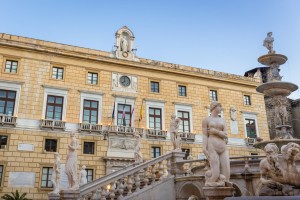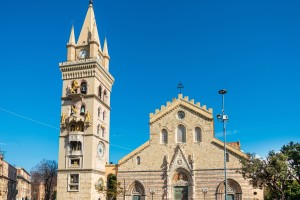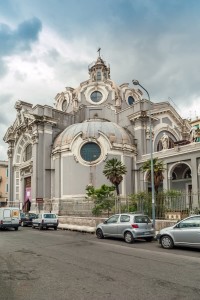The magnificent coastal strip at the Gulf of Genoa frames the enchanting Province of Savona. Bordered by the Ligurian Alps and the Apennines toward Piedmont in the hinterland, the seaside region is known for its numerous beach resorts, yet it also has many a hidden treasure to offer. Where there were settlements as early as the Punic Wars, there are now several charming cities focusing on, even savouring the Mediterranean flair that is characteristic for most of Liguria. In addition, the Province of Savona is home to many particularly beautiful places that are part of the private association “I borghi più belli d’Italia.” Time to check out some of these inviting spots with their medieval emphases.
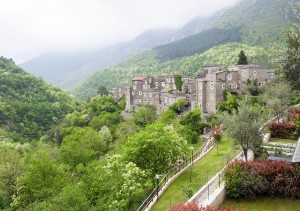
©Bigstock.com/MarkUK97
Colletta
We begin our journey in Castelbianco and head for the Colletta quarter (approx. 30 inhabitants), one of the most beautiful places of Italy by itself. First documented in 1202, the area was abandoned in later years and had completely decayed by the time a restoration projected was commissioned in 1995. Modelled after plans by architect Giancarlo De Carlo, the old village was rebuilt using original materials and equally old construction techniques, but it incorporated modern technology. Telecommunication brought the present into the enchanting medieval village, its ruins long since gone. At first glance it’s hard to believe that Colletta was only “built” during the last three decades. Walking through this lovely place, you’ll feel like exploring days long gone.
Castelvecchio di Rocca Barbena
This beautiful place (approx. 130 inhabitants) arose from a medieval castle complex on the Rocca Barbena. The so-called Castello dei Clavesana was built by the Clavesana family around the 11th century and lasted for a long time until catching heavy damage from Genoese soldiers in 1672. The north-west wing remains a ruin, other parts of the fortress has since been restored. Enjoy an astonishing view of the Val Neva. Characteristic rock houses accompany your tour of Castelvecchio di Rocca Barbena. Stop by the Chiesa di Nostra Signora Assunta, greatly extended during the 15th and 16th century, and home to many a stunning fresco.
Finalborgo
Strictly speaking, Finalborgo (approx. 3,000 inhabitants) is also part of another town – Finale Ligure, about 60 km southwest of Genoa – yet needs to be appreciated by itself. It even used to be the capital of the Margraviate of Finale during the Middle Ages and mainly served to protect from invading powers due to its location in the town’s hinterland. After being removed from the margraves’ protection in 1602, the Habsburg took over. This is reflected by Finalborgo’s architecture as the medieval structures are joined by numerous buildings of later periods. You absolutely must check out San Biagio, the mid-17th century basilica with baroque and rococo charm. The numerous astounding frescoes, however, are of later periods attesting to the changes the church experienced until the early 20th century. Its breathtaking interior alone is worth a visit.
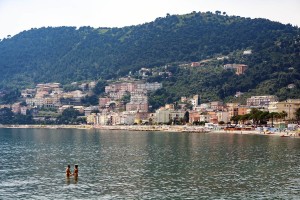
©Bigstock.com/MarkUK97
Laigueglia
At just under 1,700 inhabitants Laigueglia is certainly among the slightly larger most beautiful places of Italy. The municipality located scenically at the coast is home to divine beaches and an equally magnificent ocean view. Medieval charm once again collides with later architectural eras. You will come across three defence towers along the coast that were set up for protection against frequent pirate raids. The two belltowers of the baroque parish church San Matteo once had a similar function. Find several precious paintings from the Genoese school of painting inside the church. Stop by the Oratorio di Santa Maria Maddalena next door to see a particularly spectacular silver crucifix, a hefty marble altar, and depictions of shipwrecks and pirate attacks.
Millesimo
The history of Millesimo (over 3,100 inhabitants) can be traced back to pre-Christian times. It used to be the site of a Roman settlement, represented by a memorial stone from the 2nd or 3rd century AD in the village. The colourful houses in the centre alternate with rock buildings uniting the Middle Ages with more modern architectural leanings. Something similar applies for the sights in Millesimo, and there are plenty of them. Cross the fortified 12th century Ponte della Gaietta bridge with its watchtower to access the municipality. The nearby castle was restored during the 1990s, but its oldest structures – stone tower, keep and east wall – actually date back to the 13th century. Don’t sleep on the Chiesa della Visitazione di Maria e di Sant’Atonio, partially rebuilt around 1467, with its impressive Madonna statue.
Noli
Noli (approx. 2,400 inhabitants) is another coastal municipality among the most beautiful places in the Province of Savona. Once destroyed by the Lombards only to be rebuilt as a centre of administration, Noli suffered repeat Saracen invasion until the 15th century, formed a close alliance with Genoa and, as a naval power, even managed to maintain its independence until 1797. The former wealth can mostly be seen in the excellently preserved medieval centre with what remains of a former fortification – three town gates and towers, to be precise. Even some tower houses managed to survive the centuries fairly unharmed. The 11th century church San Paragorio awaits you at the southern entrance to the village merging the original Romanesque architecture with later Renaissance endowments. Together with the cathedral in Ventimiglia it’s Liguria’s oldest mostly preserved Romanesque church.
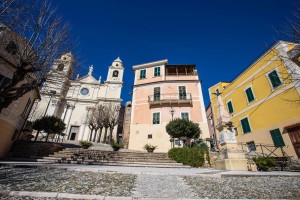
©Bigstock.com/faber1893
Verezzi
The splendid quarter (approx. 180 inhabitants) of Borgo Verezzi is near the Palm Riviera yet has so much more in offer than “just” the stunning, breathtakingly beautiful sea. Find plenty of terraced vineyards and olive groves throughout the so-called “Saracen village”, but also the characteristic Ligurian medieval architecture with its stone houses, arcades and high staircases. Verezzi is actually comprised of four small villages: Poggio, Piazza, Roccaro and Crosa. The latter is known for its structures carved into stone. Hidden behind them are cave systems dating back to prehistoric times. Enjoy the stunning ocean view on the Piazza Sant’Agostino in, well, Piazza, and stop by the charming small 17th century church afterward.
Zuccarello
The ruins of a fortress built by the Margrave of Clavesana towers over Zuccarello (approx. 270 inhabitants). Enter the village through the old, impressive town gate. A Romanesque bridge crosses the Neva river. The bridge was even on the cover of Time Magazine in the 1960s and remains a popular photo motif to this very day. Several gates and palaces lead you through the charming medieval village. So-called “beudi” – long canals that used to supply the mills and the population with water – run through Zuccarello. The now rather baroque parish church was originally Romanesque as you can gather from the old campanile. The Scalino del Buon Arrivo evokes rather uncomfortable memories. Convicts could beg the margrave for mercy on this stair. If it wasn’t granted, they were bound to the black pillar and flogged.
The gorgeous beaches and equally glorious ocean views alone make the Province of Savona worth a visit. Add the fascinating insider tips to your holiday mix for pure bliss. The most beautiful places in the Province of Savona combine characteristic medieval structures with architectural variety spanning from the Stone Age to modern times. Unhurried walks, inviting cafés, and maybe even a little dip into the ocean sum up the diversity of Liguria in one single region.
